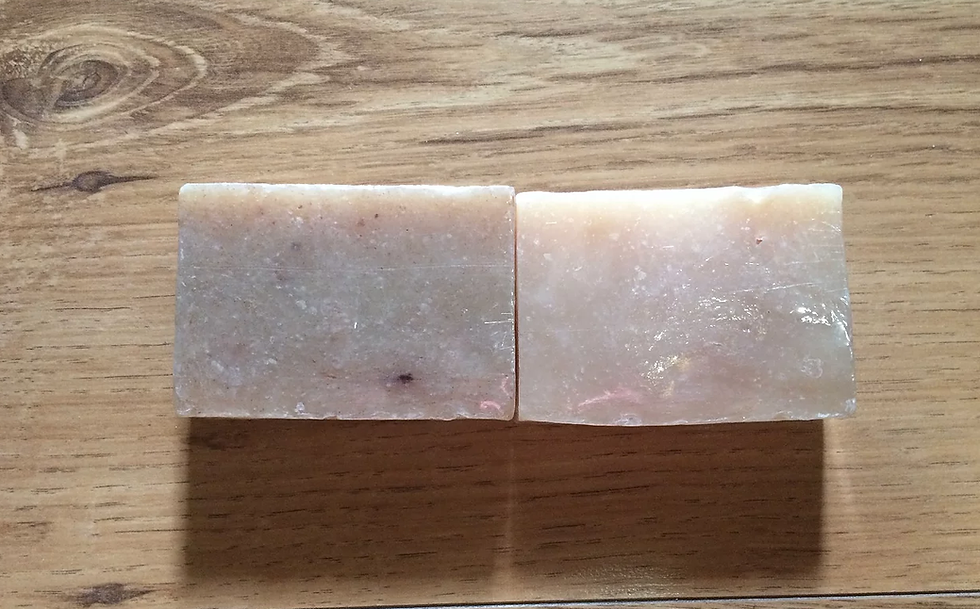กำจัดของเสียให้เหลือศูนย์ & เศรษฐกิจพอเพียง l Eliminate waste to zero and sufficiency economy
- Kritsanakorn
- 31 ธ.ค. 2563
- ยาว 3 นาที
อัปเดตเมื่อ 12 ม.ค. 2564
สังคมไทยเป็นสังคมเกษตรกรรม “ข้าว” เป็นธัญพืชที่อยู่คู่สังคมไทยมาช้านานจนเป็นวิถีชีวิต “วิถีข้าว วิถีชุมชน” เป็นของคู่กัน นอกจากเป็นธัญหารแล้วข้าวยังเป็นตัวชี้วัดหลายอย่างในสังคมไทยเช่น “คุณภาพข้าว คุณภาพคน” เป็นต้น

ดังนั้นถ้าจะให้ปลูกอย่างอื่นแทนข้าวจึงเป็นเรื่องยาก พอๆ กันกับ จะสอนปลาขึ้นต้นไม้ สอนลิงให้ว่ายน้ำ ปัจจุบันนี้เรามีปัญหาเรื่องราคาข้าว จึงเป็นความท้าทายที่จะแก้ปัญหาให้ได้ เราต้องเสริมครีบให้ปลา ให้ว่ายน้ำได้เร็วขึ้น เสริมแขนเสริมขาให้ลิงให้ขึ้นต้นไม้ได้เก่งขึ้น จึงจะเป็นทางออกที่ถูกต้อง อีกหนึ่งกรณีที่เป็นกรณีศึกษา โดยเครือข่ายวิสาหกิจชุมชนเกษตรอินทรีย์อีสาน ที่เป็นต้นแบบ หรือ Best Practice ได้คือการแปรรูปข้าวแบบ “กำจัดของเสียให้เหลือศูนย์” คือใช้ทุกสัดส่วนของข้าวให้สามารถสร้างมูลค่าได้ ไม่มีส่วนใดต้องทิ้งไปโดยเปล่าประโยชน์ มีแนวปฏิบัติง่ายๆ เมื่อสมาชิกนำข้าวเปลือกอินทรีย์มาส่งที่เครือข่ายฯ หลังจากตรวจสอบคุณภาพตามกระบวนการ ก็มีการจัดเก็บเพื่อรอการสีแปรรูป เมื่อมีการสีแปรรูปจะได้ข้าวสารและผลพลอยได้อื่นๆ เครือข่ายฯ มีวิธีการจัดการดังนี้
1.ข้าวสารที่เป็น “ต้นข้าว” หรือ “Whole Grain” ค่าเฉลี่ย 45-50 % ดำเนินการบรรจุและส่งขายตามปกติ
2.ข้าวหัก – ปลายข้าว หรือ Broken Rice – Milled Rice ค่าเฉลี่ย 20-25 % ส่วนหนึ่งส่งขายตามคำสั่งซื้อ ที่เหลือให้แปรรูปต่อเป็นแป้งข้าวอินทรีย์ เพื่อขายเป็นแป้ง หรือทำขนมขาย สร้างมูลค่าเพิ่มได้อย่างชัดเจน
3. รำข้าว หรือ Rice Bran ค่าเฉลี่ย 8-10% ปกติจะขายและมีราคาถูกมาก ได้นำมาสกัดน้ำมันรำข้าวบริสุทธิ์ (Virgin Rice Bran Oil) บรรจุแคปซูล และบรรจุขวด ขายสร้างมูลค่าเพิ่มได้อย่างมหาศาล ข้าวเปลือกหนึ่งตันจะได้รำข้าวน้ำมันประมาณ 80 กิโลกรัม สกัดน้ำมันได้ 4.5 ลิตร ขายลิตรละ 800 บาท สร้างมูลค่าได้ 3,600 บาท และเมื่อบรรจุแคปซูลแล้วจะได้ ลิตรละ 1,800 แคปซูล ขาย 60 แคปซูลละ 3 บาท ขายได้ 24,300 บาท ครีมรำข้าวที่เกิดจากการกรองน้ำมันรำข้าว นำมาทำสบู่ครีมรำข้าวอินทรีย์ได้อีกประมาณ 100 ก้อน ขายก้อนละ 50 บาทเป็นเงิน 5,000 บาท สร้างงาน สร้างรายได้ ให้กับเครือข่ายฯ อย่างเป็นรูปธรรม
4.แกลบ หรือ Husk เป็นของเสียที่ทิ้งไปเป็นจำนวนมาก ค่าเฉลี่ย 15-20% ก่อนนั้นอย่างดีก็ขาย กิโลกรัมละ .50 บาท ปัจจุบันเมื่อเครือข่ายดำเนินการเรื่อง กำจัดของเสียให้เหลือศูนย์ เรานำแกลบ+เศษข้าวตกค้าง (ค่าเฉลี่ยประมาณ 5%) และกากรำที่สกัดน้ำมันรำข้าวออกแล้ว มารวมกันแล้วบดเป็นรำละเอียดละเอียด ส่งขายเป็นรำบดสดกิโลกรัมละ 10 บาท ส่วนหนึ่งนำมาแปรรูปต่อเป็นอาหารสัตว์ต่างๆ แบบอัดเม็ดเพื่อสะดวกในการนำไปใช้เลี้ยงสัตว์ เช่น อาหารไก่ เป็ด หมู วัว ปลา เป็นต้น ขายกิโลกรัมละ 15 บาท สร้างงานสร้างรายได้มากใกล้เคียงกับรำข้าว
คำถามที่อาจเกิดขึ้นคือ ขายที่ไหน ใครคือลูกค้า ข้อ 3 และ ข้อ 4 เป็น กำจัดของเสียให้เหลือศูนย์ที่ชัดเจน ก็สมาชิกของเครือข่ายฯเองที่เป็นลูกค้าหลัก น้ำมันรำข้าวอินทรีย์ราคาถูกคุณภาพสูง คนที่จะได้กินก่อนควรเป็นชาวนาหรือสมาชิกที่เป็นผู้ปลูกข้าวนั่นเอง และทุกครัวเรือนเลี้ยงสัตว์เป็นวิถีชีวิตอยู่แล้ว แทนที่จะไปซื้ออาหารสัตว์คุณภาพต่ำราคาสูง ก็หันมาใช้บริการของเครือข่ายฯ ที่มีคุณภาพสูงราคาต่ำแทน เงินก็เหลือ คุณภาพชีวิตก็ดีขึ้น สังคมก็น่าอยู่ ผู้คนก็น่ารัก อย่างนี้จึงเป็นการนำหลักปรัชญา “เศรษฐกิจพอเพียง” มาประยุกต์ใช้อย่างแท้จริง.
Eliminate waste to zero and sufficiency economy
Thai society is based on agriculture. Rice is a cereal historically grown in Thai society as has now become a way of life. Rice is central to Thai society and good rice quality can be equated to good human quality.
Thai people are resistant to planting crops other than rice. The market price of the rice crop is very important and if prices are low this causes severe financial hardship for the farmers. Planting organic rice will ensure high sales revenue for the crop.
A case study was conducted by the network of northeastern organic community enterprises for a prototype or best practice as “zero waste” rice processing. This uses every aspect of the rice to create value. No part is abandoned. Simple quality checking guidelines are followed when members deliver organic rice to the network
1. Rice with an average of 45-50% whole grains is packed for delivery as the normal process.
2. Broken rice is defined as milled rice with an average of 20-25% whole grains. Some broken rice is sold according to the purchase orders, while the rest is further processed into organic rice flour and sold to make desserts, thereby adding value.
3. An average of 8-10% of rice bran is usually sold at very cheap prices. We extracted Virgin Rice Bran Oil for sale in capsules and bottles and this adds tremendous value to the product.
One ton of paddy rice can produce about 80 kg of rice bran oil, and 4.5 liters of oil at a selling price of 800 baht per liter has a value of 3,600 baht. When in capsule form, the sale price increases to 1,800 baht per liter. 3 baht for 60 capsules give a total of 24,300 baht.
Rice bran cream produced by filtering rice bran oil can generate about 100 pieces of organic rice bran cream soap. A selling price of 50 baht per piece gives a total of 5,000 baht. This process creates jobs and increases income to the network.
4. On average, 15-20%, as waste rice husk is removed during the milling process, selling at 0.50 baht per kg. To manage zero waste, the rice husk, residue rice (average about 5%) and rice bran already extracted are ground together into fine bran and sold at 10 baht per kg. The mixture can also be processed into various animal feeds as pellet form for easy use in raising animals such as chickens, ducks, pigs, cows, and fish food, selling at 15 baht per kg.
Questions that may arise include where to sell and who are the customers for item 3 and item
4 zero waste. Members of the network are the main customers. Organic rice bran oil with high quality and low price is first sold to farmers or members of the rice-growing community.
For every household, raising animals is a way of life. Instead of buying low quality and expensive animal feed, products from the network of high quality but low price can be used instead. This will improve the lives of people and society. This is the philosophy; we apply “Sufficiency Economy”.




ความคิดเห็น